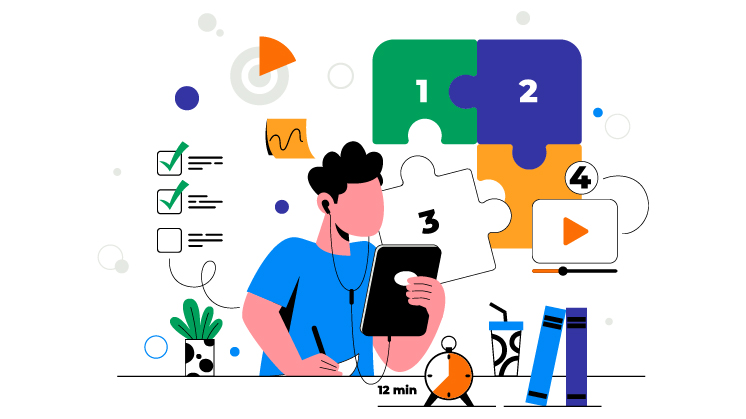Keeping customers coming back is crucial in every business, especially in e-commerce. But here is a powerful tool to compel customers to come back quite often: Loyalty Reward Points. These points can turn one-time buyers into loyal fans. But how do you set up a system that works?

Let’s explore the best ways to reward your customers and keep them coming back for more.
1. Points for Purchases: The Classic Approach
The most common way to award loyalty points is based on how much a customer spends. It’s simple and effective. Here’s how to make it work:

- Set a clear ratio: For example, 1 point for every $1 spent
- Make it easy to understand: Use round numbers
- Be generous: Customers should feel the rewards are worth it
A real-life example is Sephora’s Beauty Insider program. This simple system offers 1 point for every $1 spent, helping Sephora build a loyal customer base of over 25 million members.
Don’t just copy others. Think about what makes sense for your business. You might want to offer more points per dollar if you sell big-ticket items. You could also offer bonus points for smaller purchases on certain days or for specific products.
Remember, the goal is to encourage more spending. A study by Bain & Company found that loyalty program customers spend 12-18% more than non-members. That’s a big boost for your bottom line!
2. Loyalty Points For Birthday Rewards
Everyone loves to feel special on their birthday. Use this to your advantage:
- Offer bonus points on a customer’s birthday
- Give a special discount or free item
- Extend the offer for the whole birthday month
Starbucks does this well. They give customers a free drink or food item on their birthday. This simple gesture makes customers feel valued and encourages them to visit on their special day.
But why stop at birthdays? You could offer similar rewards for:
- Customer anniversaries (when they first joined your program)
- Major life events (if you know them)
- Holidays relevant to your business
A study by Epsilon found that 80% of consumers are more likely to do business with a company that offers personalized experiences. Birthday rewards are an easy way to add that personal touch.
3. Social Media Engagement
In our connected world, social media is a powerful tool. Use it to boost your loyalty rewards program:
- Award points for follows, likes, and shares
- Give bonus points for user-generated content
- Create special hashtags for point-earning opportunities
For example, Marriott Bonvoy offers points for linking social media accounts and sharing stays. This not only rewards customers but also gets them to promote the brand.
Here are some ideas to try:
- Photo contests with your product
- Points for writing reviews
- Bonus points for referring friends through social media
Remember, according to Ambassador, 71% of consumers with a good social media experience with a brand are likely to recommend it to others. That’s free advertising!
4. Gamification: Make It Fun
Turn earning points into a game using gamification. This can make your loyalty program more engaging and fun:
- Create challenges or quests
- Offer levels or tiers with increasing rewards
- Use a progress bar to show how close they are to the next reward
Nike does this well with their Nike Run Club app. Users earn points for completing runs and challenges. They can level up and unlock exclusive rewards.
Some ideas to gamify your loyalty rewards program:
- Daily or weekly challenges
- Mystery rewards for reaching certain point totals
- Limited-time bonus point events
WordPress gamification works. A study by Gigya found that websites using gamification saw a 29% increase in user engagement. It’s not just fun – it’s effective!
5. Points for Learning
Reward customers for learning about your products or industry. This can lead to more informed, loyal customers:
- Offer points for watching product videos
- Give rewards for completing quizzes about your products
- Award points for attending webinars or in-store events
Sephora’s Beauty Insider program includes the Beauty Insider Community. Members can earn points by writing reviews, answering questions, and sharing looks. This not only rewards customers but also creates valuable content for the brand.
Other ideas can be:
- Points for reading blog posts
- Rewards for subscribing to your newsletter
- Bonus points for trying new products and providing feedback
Educated customers are valuable. A study by Google found that 53% of shoppers always do research before they buy to ensure they are making the best possible choice. By rewarding this behavior, you’re creating more confident, loyal customers.
6. Charitable Donations
Allow customers to donate their points to charity. This can create goodwill and align your brand with important causes:
- Partner with relevant charities
- Let customers choose from a list of causes
- Match donations to increase impact
JetBlue’s TrueBlue program lets members donate points to charities. This not only helps good causes but also builds a positive brand image.
Some ways to implement this:
- Seasonal charity campaigns
- Emergency relief point donations
- Local community support initiatives
This approach can be powerful. A study by Cone Communications found that 87% of consumers will purchase a product because a company advocated for an issue they cared about.
By letting customers donate points, you show that you care, too.
7. Surprise: The Unexpected Bonus
Sometimes, the best rewards are the ones we don’t expect. Surprise your customers with bonus points:
- Random point bonuses on purchases
- Extra points for loyal customers
- Surprise gifts or experiences
Zappos is famous for its surprise upgrades to overnight shipping. While not points-based, this strategy shows the power of unexpected rewards.
Ideas for surprise loyalty reward points:
- Double points days (announced day-off)
- Random “lucky customer” bonuses
- Bonus points for purchases on slow business days
Surprises always work. A study by the Journal of Marketing Research found that surprise rewards are more effective at driving behavior than expected rewards of the same value.
How to Implement Loyalty Reward Points Program
Now that we’ve covered the best ways to award points, let’s talk about putting it all together:
- Choose the right mix: You don’t need to use all these methods. Pick the ones that fit your business and customers.
- Keep it simple: Make sure customers can easily understand how to earn and redeem points.
- Use technology: A good loyalty program software can make managing points much easier.
- Communicate clearly: Make sure customers know about your program and how it works.
- Analyze and adjust: Keep track of what’s working and be ready to make changes.
A good loyalty rewards points program can have a big impact. According to Bond Brand Loyalty, 79% of consumers say loyalty programs make them more likely to continue doing business with brands.
The Power of Loyalty Programs – Through The Lens of Numbers
Let’s look at some numbers that show why loyalty programs matter:
- Loyal customers spend 67% more than new ones (Bain & Company)
- It costs 5-25 times more to acquire a new customer than to keep a current one (Harvard Business Review)
- 75% of consumers say they favor companies that offer rewards (Virtual Incentives)
The above stats show that a good loyalty program isn’t just nice to have – it’s a key part of business success.
What are The Common Mistakes to Avoid With Regard to Loyalty Reward Points
As you set up your program for loyalty reward points, watch out for these common lacks:
- Making it too complicated: If customers can’t understand it, they won’t use it.
- Not offering enough value: Make sure the rewards are worth the effort.
- Ignoring data: Use the information from your program to improve your business.
- Forgetting to promote it: Make sure customers know about your program.
- Not training staff: Your team needs to understand and promote the program.
The Future of Loyalty Reward Points Program
As technology changes, so do loyalty programs. Here are some trends that will dominate the future:
- Mobile integration: More programs are moving to apps for easy access.
- Personalization: Using data to offer custom rewards.
- Partnerships: Brands working together to offer more value.
- Blockchain: Some companies are exploring crypto rewards.
Keep an eye on these trends as you develop your program.
Last Words
A well-designed loyalty program can turn casual customers into brand advocates. Using a mix of the methods we’ve discussed, you can create a loyalty reward points program that keeps making customers repeat buyers. The goal isn’t just to give points but to build customer relationships. When done right, a loyalty program can be a powerful tool for growth.



